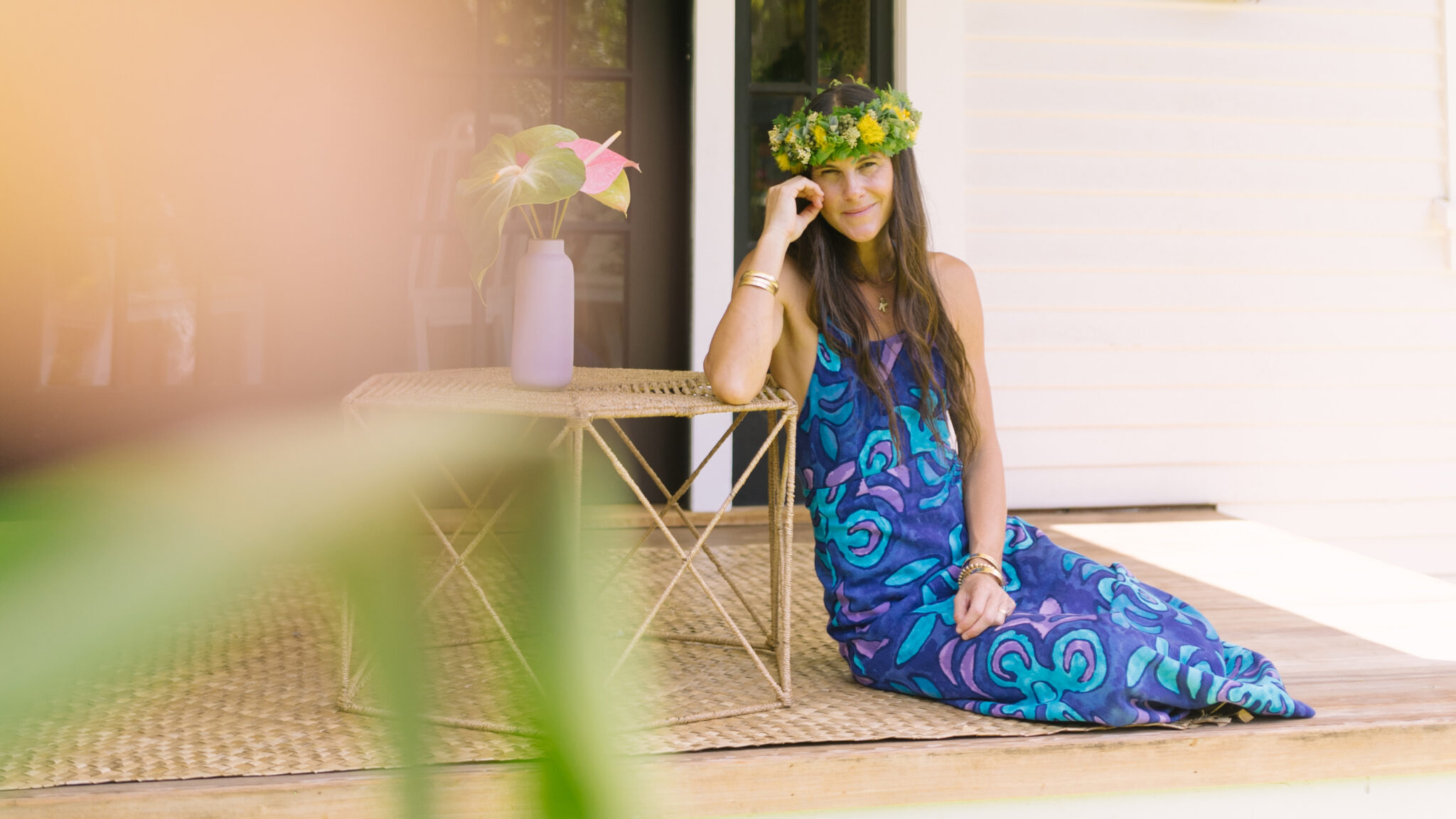
E heluhelu ma ka ʻōlelo Hawaiʻi (Read in Hawaiian).
For lei maker Meleana Estes, every creation is a gift back to her tūtū, community, and the land.
Images by Mahina Choy-Ellis
Edited by N. Haʻalilio Solomon
My first meeting with Meleana Estes, a Native Hawaiian woman famous for her beautiful lei and other adornments, was in the shade of Lēʻahi. There in her pleasant home in the sea spray of Waikīkī, we discussed the genealogy of her lei making knowledge and the responsibilities of indigenous artists in this age. Interviewing her, a familiar sight caught my attention, an Ebert surfboard made only on Kauaʻi. My host confirmed that she was raised partially on Kauaʻi and partially in Mānoa in the home of her beloved grandmother.
Sharing fond memories of her grandmother, Amelia Ana Kaʻōpua Bailey of Kalihi, she said again and again of her, “She is so amazing.” And that great gratitude to this woman was plainly heard in everything she said about her tūtū who passed away in 2012 at the age of 89. My host shared her story: Her grandmother did not learn to make lei as a child as Estes and her family; it wasn’t until she was around 50 years old “when she became more a student of lei making,” Estes explained, attributing her grandmother’s lei making as a product of the Hawaiian Renaissance.
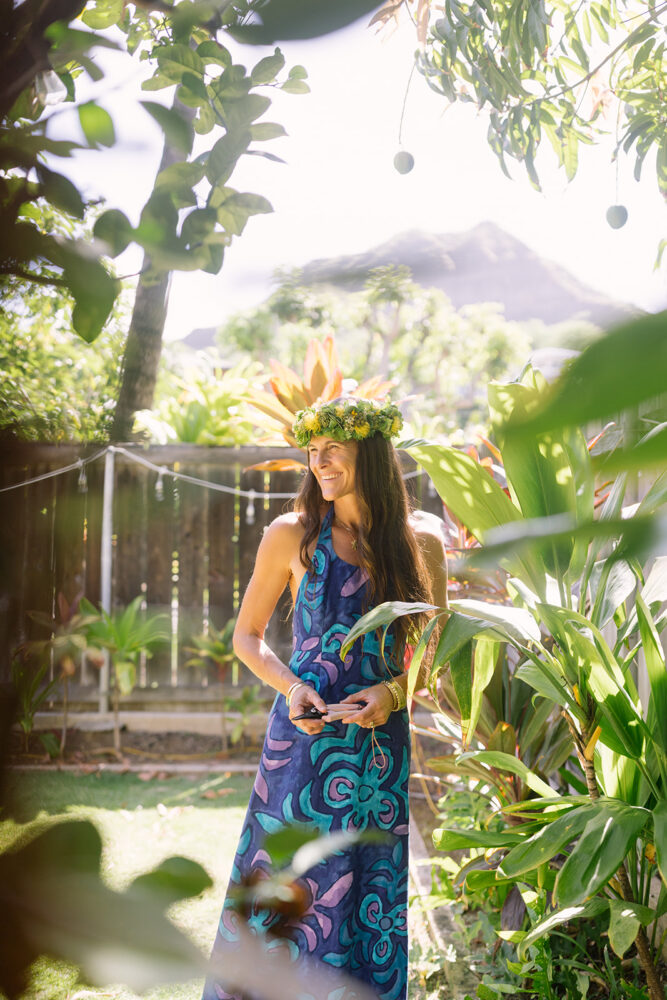
If you know that you’re going to be practicing lei making consistently, growing your own palapalai, liko [lehua], pōhinahina, growing those natives that you know you want to include in your lei is the responsible thing to do.
Meleana Estes, lei maker
Master lei maker Marie McDonald was Estes’ grandmother’s teacher, and under her instruction Kaʻōpuaʻs interest in traditional Hawaiian lei grew. “She was so interested in the style of wili and also haku, kind of more the traditional styles of lei that were not kui, done with needle and thread,” Estes said. “They were done with natural materials and really sought out learning it.”
From there Estes and I talked story at length about the various plants that she uses. From this topic, the question arose: What are the responsibilities of lei makers to Native Hawaiian plants, and how can they support the use of native materials with consideration to the environment? My kamaʻāina responded, “Very good question,” but it was obvious that she already knew the answer. “I think as a lei maker you should grow your own,” she stated. “If you know that you’re going to be practicing lei making consistently, growing your own palapalai, growing your own liko [lehua], growing your pōhinahina, growing those natives that you know you want to include in your lei is the responsible thing to do.”
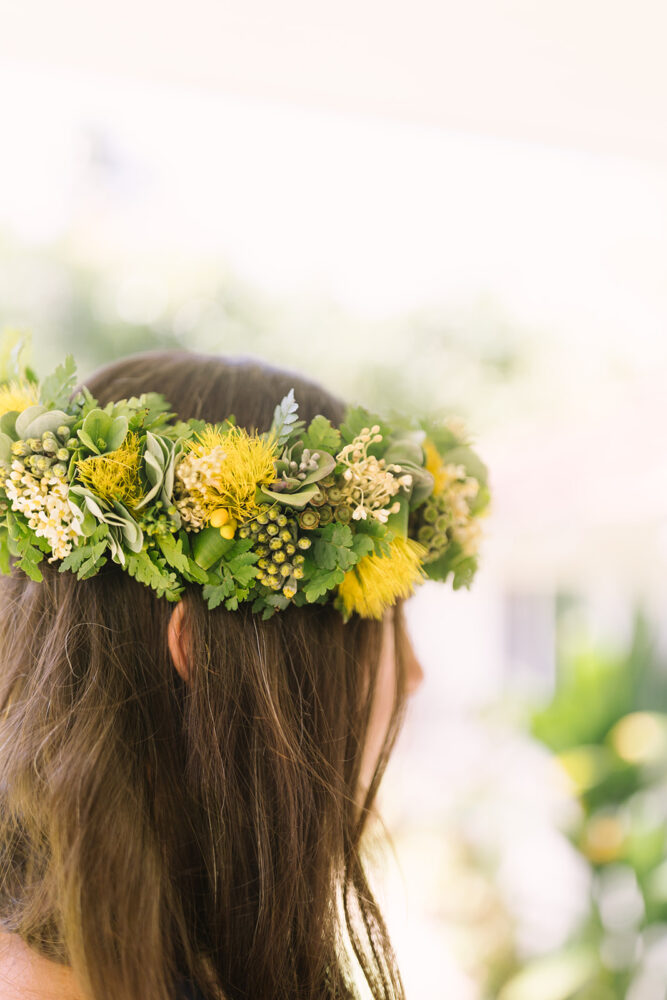
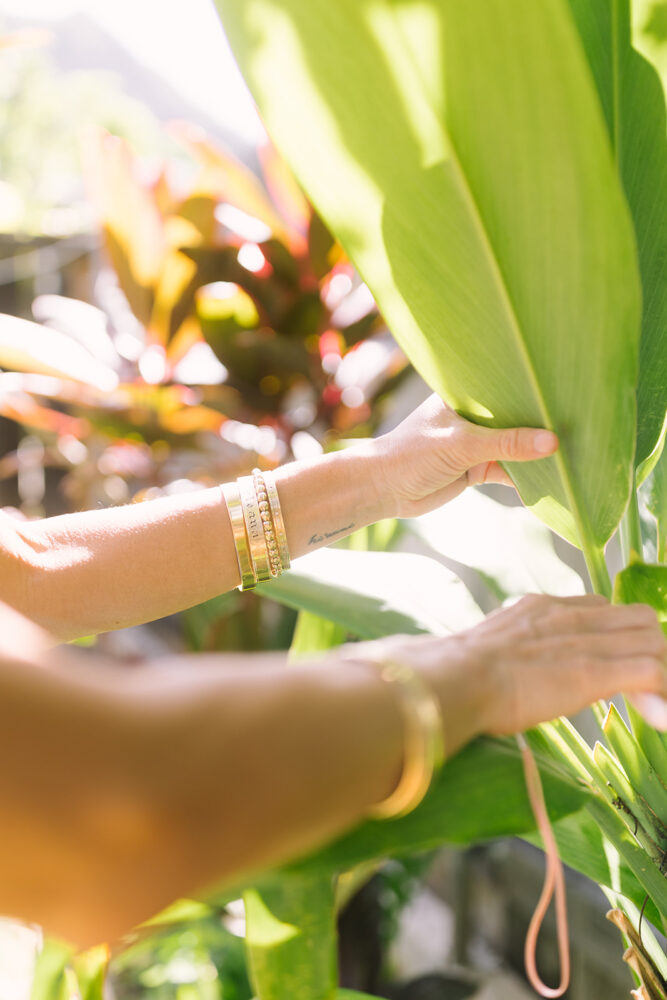
Afterwards, Estes explained a custom that her tūtū taught her is to make lei offerings to the land where one picks lei material. “She would teach us, as you’re hiking picking palapalai, maybe sit and do a hili, which is braid, just one material, and leave it for the forest, before you leave the forest,” she said. To her, this is a practice that connects a person to the land. Estes and her family learned from this custom the importance of the responsibility of the lei maker. It didn’t, however, ever become a burden for her. My host said of her abilities, “I’ve been given this gift … I have the capability, I’m going to make a lei,” and so it became her responsibility in her family.
It is her hope that we no longer have to completely rely on the skilled fingers of the aunties in Chinatown, that we can make our own lei for our ʻohana, too.
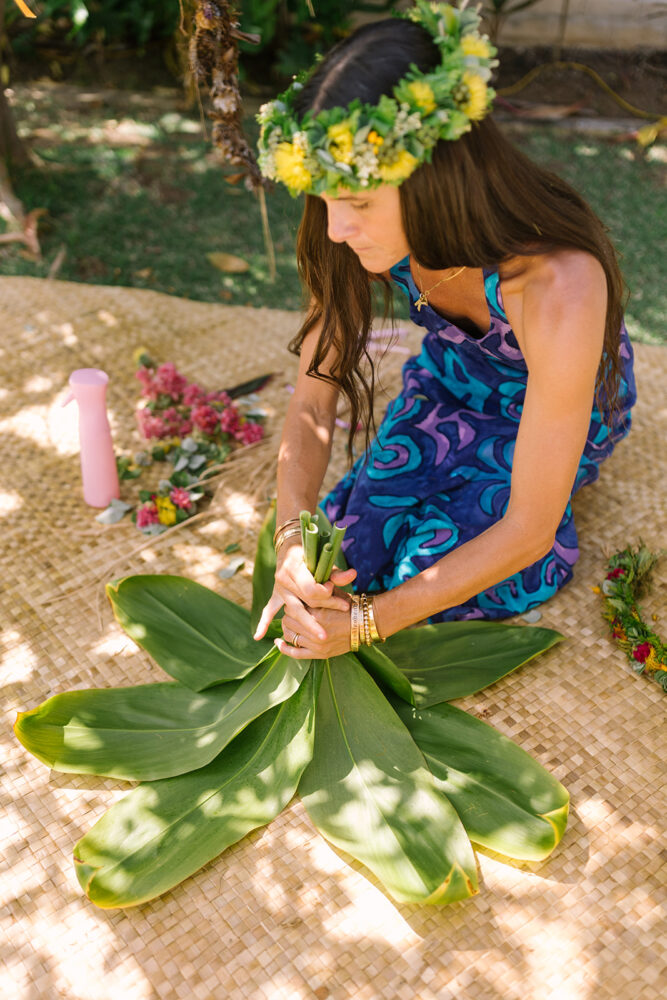
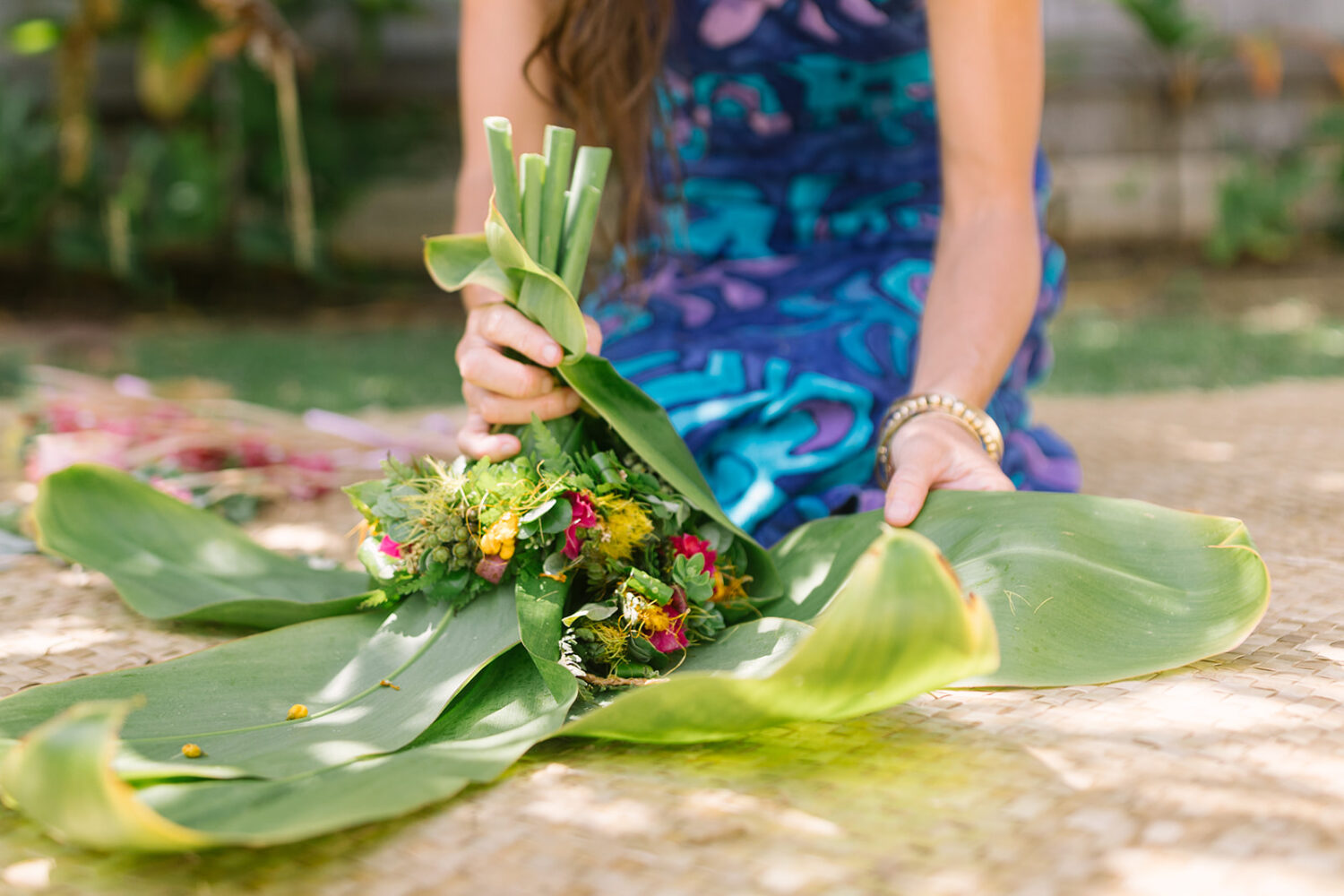
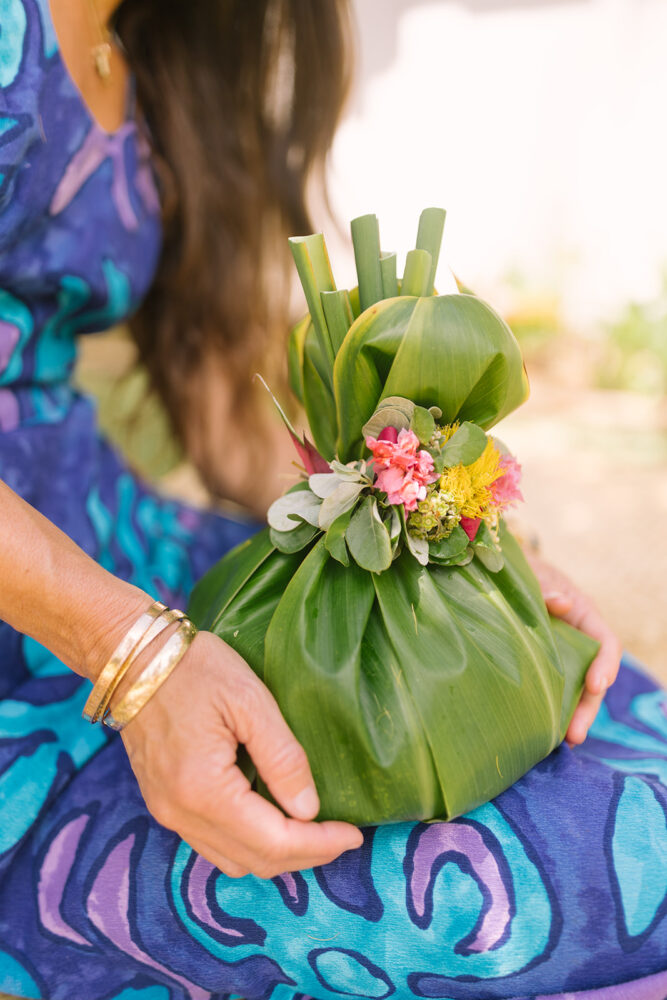
Now, with the release of her book, Lei Aloha, the gorgeous sight of her lei will be widespread among the people. This work by Estes with Jennifer Fielder is full of memories of lei making, as well as the stories and traditions of this most famous art form of our islands. For my final question to her, I asked her where her lei practice is going in the future? She replied, laughing gently, “Oh, I have an idea.” She explained her thoughts that now is a time of great opportunity to create education for this Hawaiian art form. “I think every 15-year-old should be learning to make lei poʻo,” Estes shared.
It is her hope that we no longer have to completely rely on the skilled fingers of the aunties in Chinatown, that we can make our own lei for our ʻohana, too. About her book, my host said to me, “It was definitely a collective effort … and it really feels like Hawaiʻi’s story of lei. I really believe it’s Hawaiʻi’s book.”
This story is part of Flux Hawaii’s Hawaiian-language reporting series featuring articles produced all in ‘ōlelo Hawai‘i. This series, in partnership with Kīnā‘ole Foundation, features the next generation of Native Hawaiians carrying on their ancestral traditions and returning aloha to the world.

